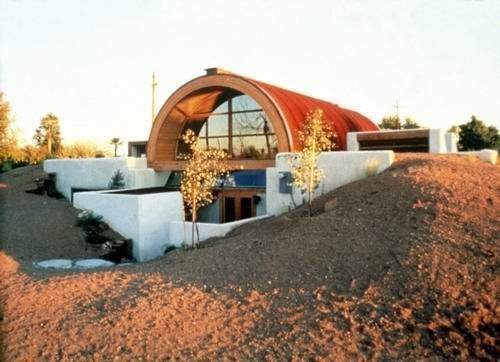In Arizona, we may not get much rain, but when we do, we get a lot.
So, it pays to know whether or not your house has a high risk of flooding or draining problems.
There’s a good chance that your house is at risk for flooding problems if:
- Parts of the house are lower than surrounding areas, i.e. water can’t flow away from property
- The house is located on a FEMA mapped floodplain
- There is a drainage easement on the property
- There is a natural wash or manmade drainage channel on/near the property
- Roof runoff cannot flow safely away from the house
If these 5 things apply to your home and you have a basement, we suggest installing a sump pump to prevent costly water damage.
So let’s take a closer look at each of these signs…
1. Parts of the house are lower than the surrounding ground making it difficult for water to flow away from the property.
Many homes in the Arizona area are built in very hilly areas, which can prevent water from draining away from your home.
For example, this home located in Tempe, Arizona is built into the ground on purpose in order to save on cooling costs. But it’s at a high risk for flooding and drainage damage because instead of draining away, rain water has no choice but to flow towards the home.
Photo source: energy.gov
But not all homes that are at risk of drainage problems are as obvious as this one. It can be difficult to tell if some areas of the home are lower than surrounding areas.
To help you determine how low the house sits compared to nearby areas, look for the following signs:
- Evidence of water flowing onto the property (erosion, debris)
- Look for evidence of ponding (standing water on property, overgrown vegetation)
- The walls of the home are water stained
2. The property is located within a FEMA mapped floodplain.
The Federal Emergency Management Agency (FEMA) provides detailed maps of areas across the country that are flood hazards.
Areas on a particular flood map are designated as either high, moderate or low flood risks.
Want to know the quickest and easiest way to tell if your home is located on a FEMA mapped floodplain? If you’re paying additional insurance. In almost all cases, homes that are located on a floodplain have mandatory flood insurance.
Click here to access your community’s flood map. Simply type in the area you are interested in and FEMA will deliver the current flood map of the area.
3. There is a dedicated drainage easement on or near your property.
An easement is basically a legal right given to a 3rd party (usually the city or a utility company) to use land on a property for a specific purpose. A “drainage” easement gives rights to a 3rd party to use that land to maintain drainage in the area.
Usually the land will include a culvert (a tunnel), drain or ditch to improve drainage.
Example of a city-owned drainage ditch that flooded.
Photo source: wbtv.com
A drainage easement doesn’t mean you’ll have flooding; it just means that there’s a higher chance of a flood happening near you.
So how do you know if there is a drainage easement on your property?
Contact your city or County records department. They should have a copy of the easement documents for the majority of the city’s major washes/channels.
Want to search for a particular easement in Maricopa County? Click here to search for easements by code, title or by particular phrases.
4. There is a natural wash or manmade drainage channel on, or near your property.
If there is a natural wash (i.e. a stream, swale, arroyo, or channel) or a ditch nearby, you have a higher chance of flooding on your property.
Those channels are meant to direct water toward proper drainage areas. During heavy rainfall, the water collects in these areas and may flood over into your property.
Water overflows after a monsoon floods a desert wash.
Photo source: shutterstock
5. Roof runoff/irrigation/sprinkler water cannot flow safely away from your house.
Your roof produces a large amount of runoff water when it rains. So it’s important that the runoff water can drain away from the house as quickly as it runs off the roof.
If you notice that water pools in flat areas of the yard around your house when it rains, you could have a problem with your roof runoff water.
Another clear sign of improper drainage is flooding in the yard when the sprinkler system is in use. If the yard isn’t graded properly, you’ll see water pooling in some areas and/or water flowing toward instead of away from the house.
Worried about flooding? Have an Arizona plumber install a sump pump
If you think your Arizona home may be at risk for drainage damage or flooding, ignoring the issue isn’t an option.
Most homeowners insurance doesn’t cover floods, so if you don’t have flood insurance and your home is flooded you’re looking at a very expensive and completely uncovered loss.
Want to protect your family against the uninsured risk of flooding?
Install a sump pump that automatically pumps water out of low-lying areas in or around your house. Sump pumps are also valuable in homes with poor grading that need manual or mechanical assistance to pump the flow of water uphill to the city sewer system.
Contact us today to learn more about the many uses of a sump pump and how it saves your home from unnecessary flooding.

